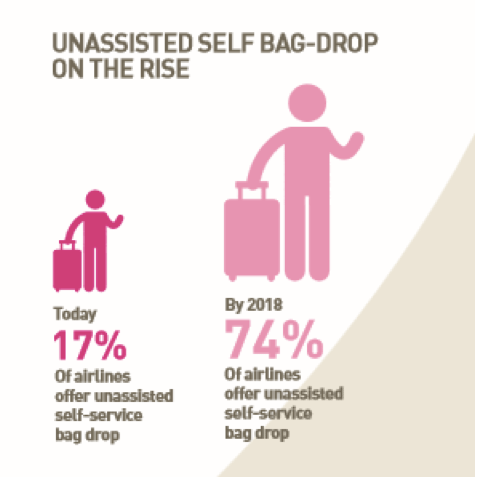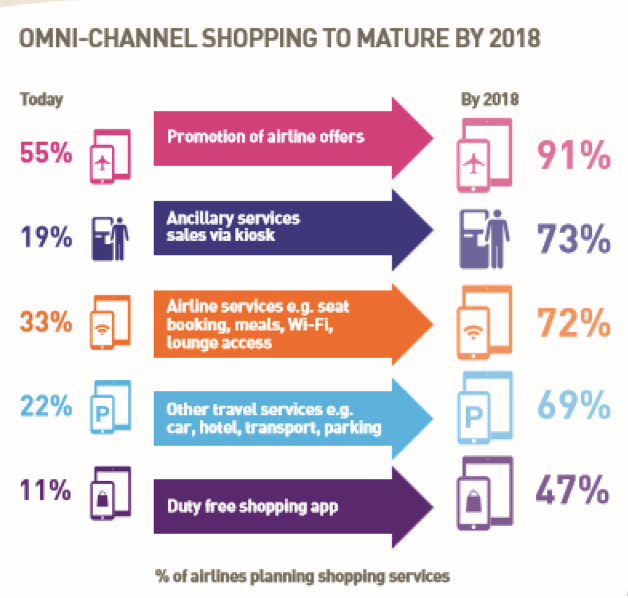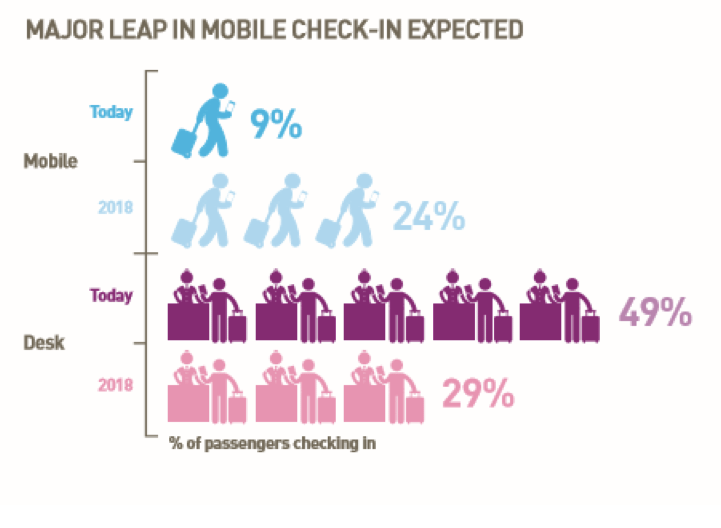Skift Take
The irony that circuits and code will make travel more personal is not lost on us, but we look forward to letting the Internet of Stuff do its thing.
Beware buzzwords—there be monsters! But, as we experienced walking round the exhibits at the SITA Air Transport IT Summit (ATIS) in Brussels this week, at least one popular buzz-phrase promises to make air travel much less nerve wracking.
The Internet of Things (IoT) is a big concept to get one’s head around. It’s intimidating because its possibilities are virtually limitless. Even tech people haven’t quite figured out how far IoT could reach. Today, it’s a bustling, noisy, playground of ideas, but tomorrow it could become a cool, calm, and collected new reality.
In practical terms, the IoT s links up devices and shares relevant data, centered on an individual’s experiential needs in the context of time, place, and application. Rather than bombard us with disorienting suggestions and reminders on our personal digital devices, the IoT infrastructure will recognize us as individual. It will tailor its interactions with us around our preferences. It will anticipate our needs and make relevant recommendations. It will predict where we might run into trouble and share critical information before we need to ask.
Before it delivers on its promise, the IoT requires major infrastructure in smart devices and location technology, as well as intelligent software that will sift through head-cracking volumes of data, and find the relevant threads for each moment of an experience.
As we’ve previously reported, the air travel industry has been busy installing beacons at airports, developing apps, and building a software framework—with many projects in the works.
As Jim Peters, Chief Technology Officer, SITA, who also refers to this technological shift as “The Internet of Stuff” says of progress in the industry: “Our whole world is becoming more and more connected and airlines recognize that investment will be needed to harness the benefits of IoT efficiently. This year airlines are beefing up their investments in both business intelligence and data centers, which are key foundations required for the IoT. SITA is already working across the community, with airlines, airports and other stakeholders, to see how to make the IoT effective across every point of the business and passenger journey.”
The aim is to improve the mood of travelers, eliminate the pain and replace it with surprise and delight. Here are the top “Aha!” moments to expect from IoT—coming soon airlines and airports everywhere.
1. Way-Finding will be way easier.
With beacons installed throughout the terminal, and your smartphone device, new airport apps will be active way-finding maps which can be focused in to highlight exactly where you need to be, including the time to get there. You’ll always know when to get to the gate. This will benefit everyone, but for individuals with mobility limitations or disabilities, the opportunity to gauge the journey and to reach out for assistance through a device could make air travel a viable option.
2. You’ll always know where your stuff is.
There is oh, so, much, to say about baggage, but IoT can lessen the burden of this weighty subject. Bottom line: You’ll be in control of your luggage, regardless of size. More importantly, you’ll know where your bags are at all times. Even when they’re not where they should be, you’ll know how soon they’ll get there. And with IoT, the likelihood of lost luggage is significantly reduced.
3. Booking and shoppings are transformed with “smart” retail.
With airlines and airports turning to smart retailing–what you already enjoy from on-line shopping outlets — the industry stands to increase critical revenue. It also benefits passengers.
At booking, airlines will offer the extra services you need, based on what you’ve needed before, where you’re headed and even who’s traveling with you. The intelligent reservations interface remembers your trip history and makes relevant recommendations.
Imagine finding the nearest shop at your airport that can replace your lost headphones, or walking past your luxury clothing store of choice and receiving a special offer for that one item you’ve searched for and couldn’t find anywhere. You’ll find the nearest café to enjoy a quick lunch that fits your dining preferences, and access reviews from fellow travelers. IoT can even pinpoint where that cinnamon scent is coming from and map out a trail on your device to blissful satisfaction.
You’ll know whether you can afford to spend 30 minutes lost in the Duty-Free shop and still make your flight. You’ll also get gentle nudge to pay for all that shopping and head to your gate, before the disembodied, multilingual, voice of the terminal announcer outs you as “that” person responsible for keeping everyone else grounded.
The Daily Newsletter
Our daily coverage of the global travel industry. Written by editors and analysts from across Skift’s brands.
Have a confidential tip for Skift? Get in touch
Tags: sita, technology
Photo credit: Beacons at airports will provide way-finding and stuff-finding benefits. SITA


